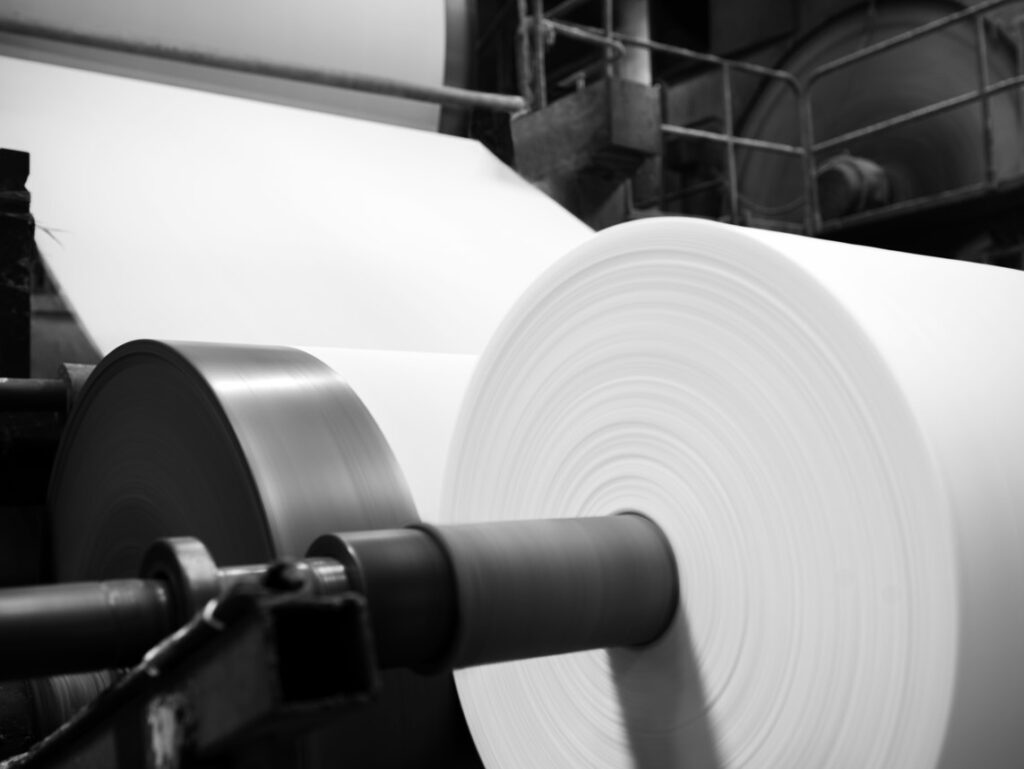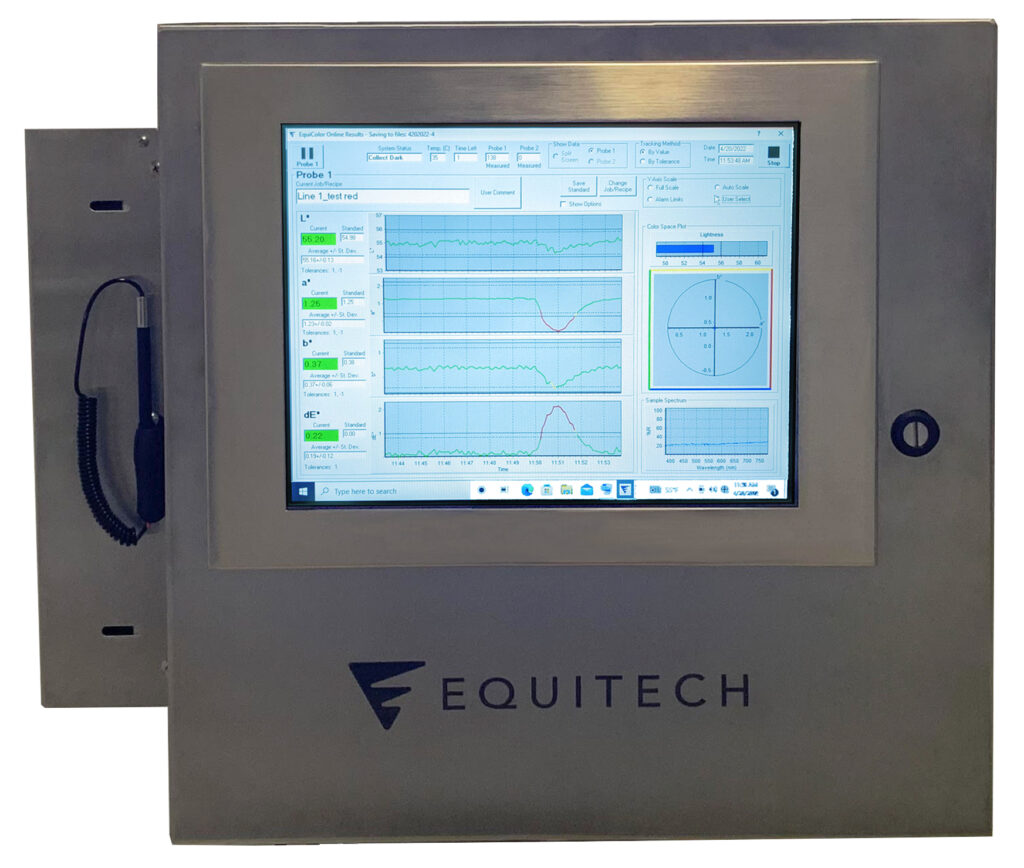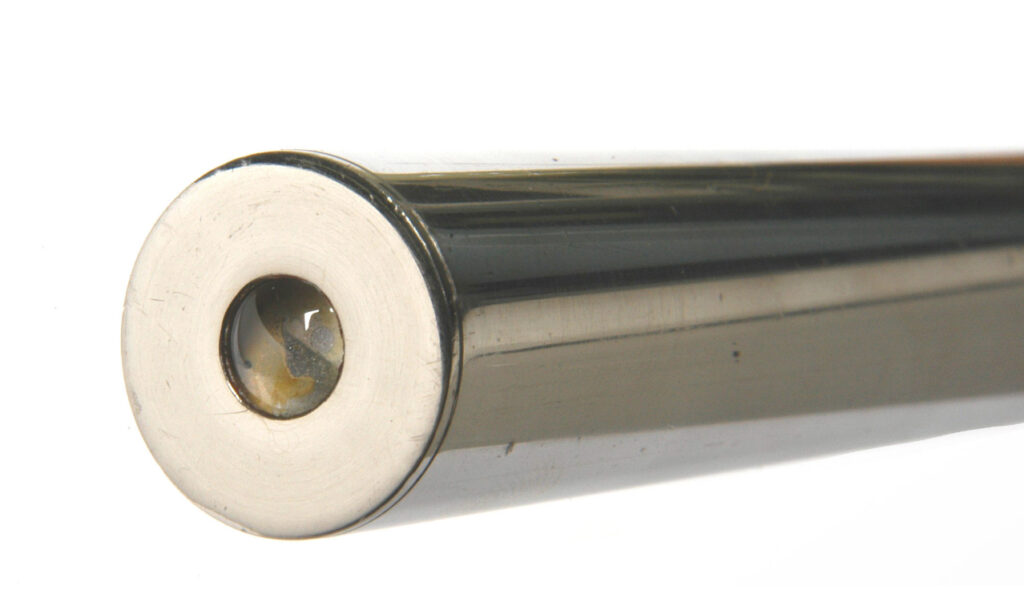IN-LINE Whiteness MEASUREMENT
INTRODUCTION
Due to their high lightness and achromatic nature, white materials are critical to many industries because they provide the necessary base, background, or substrate for many products. As a result, white materials are commonly employed for many aesthetic and technical applications in industries like paint, textiles, food, printing, pharmaceuticals, plastics, etc. (FIG. 1).
Many natural and artificial materials oxidize, degrade, burn, and change their physical and chemical properties when exposed to environmental and processing conditions such as rain, ionizing radiation, thermal stress, shear forces, and pressure. For example, some polymers undergo chain scission, and in some chemical reactions, the development of color may indicate that a contaminant is present.
The degree of whiteness or the deviation from a perfect white is, therefore, a function of the material and the application in which it is used. For this reason, many industries must monitor and control the degree of whiteness of their base materials or substrates.

What is Whiteness
Whiteness, measured in percentage, measures how far apart a particular material is from an ideal white. An ideal white is a surface that matches the properties of a perfect or ideal reflecting surface. An ideal reflecting surface does not absorb or transmit light, but it reflects it at equal intensities in all directions.
Over the years, various whiteness indexes have been developed and abandoned for more modern ones. Today’s two most popular indexes are the CIE and the E313-20 Whiteness Indexes.
The CIE Whiteness Index
The Commission Internationale de L’éclairage (CIE) [International Commission on Illumination] whiteness formula was recommended in 1986 as an assessment method for white materials. For the CIE 1931 standard colorimetric observer, the whiteness index WI is given by: W = Y + (WI,x) (𝑥n— 𝑥) + (WI,Y) (𝑦n—𝑦), where Y, x, y are the luminance factor and the chromaticity coordinates of the specimen; xn, yn are the chromaticity coordinates for the CIE standard illuminant and source used; and WI,x and WI,Y are numerical coefficients with values as a function of the CIE Standard Illuminant and Observer. For example, the values for D65 and the 1931 observer (2 degrees) are 800 and 1700, respectively.
The ASTM E313-20 Whiteness Index
The American Society for Testing and Materials (ASTM) is an international organization that develops standards for producers, users, and consumers. ASTM-E 313 (‘Standard Practice for Calculating Yellowness and Whiteness Indices from Instrumentally Measured Color Coordinates’) defines the standard practice for calculating the yellowness and whiteness index with instrumental measurement of colorimetric coordinates. The procedure uses the model CIE X, Y, and Z tristimulus coordinates, and it was last updated in 2020.
Optical Brighteners
Optical brightening agents (OBAs) are chemical compounds that absorb light in the ultraviolet region of the spectrum and re-emit light in the blue region (~420 to 470nm). This phenomenon is called fluorescence. Optical brighteners make objects that have “yellowed” (i.e., lack blue and purple reflection) appear whiter than white. They compensate for the lack of blue and purple reflection with their fluorophore emission.
Chemical Bleaching
Chemical bleaching agents are oxidizing or reducing agents. These agents react with colorful unsaturated bonds and reduce them, forming colorless substrates. For example, they are used to fade colored impurities in fibers. Because chemical bleaching damages fibrous tissues to varying degrees, its use must be controlled carefully.
In-Line Whiteness Measurement
The EquiSpec In-Line Process Spectrophotometer (IPS) is a high-performance instrument designed for use in an industrial process (FIG. 2). Its excellent sensitivity and flexibility make it helpful for process applications involving process lines or mixing tanks.
The IPS and process probes are designed for high-temperature, high-pressure, and corrosive environments. Depending on the employed process probe, it can analyze powders (solids), liquids, gases, or slurries. (FIG. 3)
This system is ideally suited for monitoring various materials’ Whiteness Index (WI). Measurement of WI in real-time allows for complete product documentation and immediate intervention when degradation occurs.

USER BENEFITS
• Real-time monitoring of the Whiteness Index
• Real-time monitoring of products’ purity and clarity
• Accountability tracking for sensitive materials
• Waste reduction
• Reaction optimization

CONTACT US
Equitech Int’l Corporation
7711 Idlewild Road, Indian Trail, NC 28079
Tel +1-704-882-4624
[email protected]
equitechintl.com
